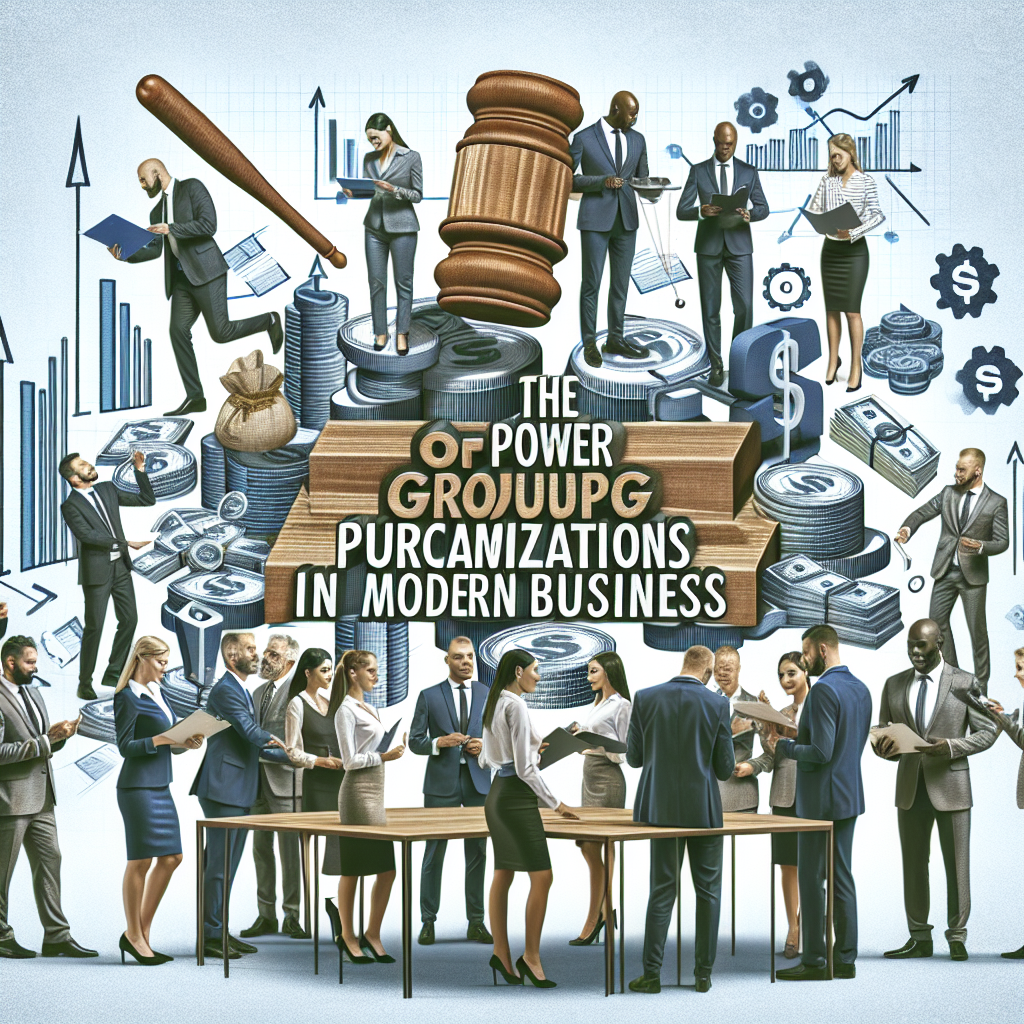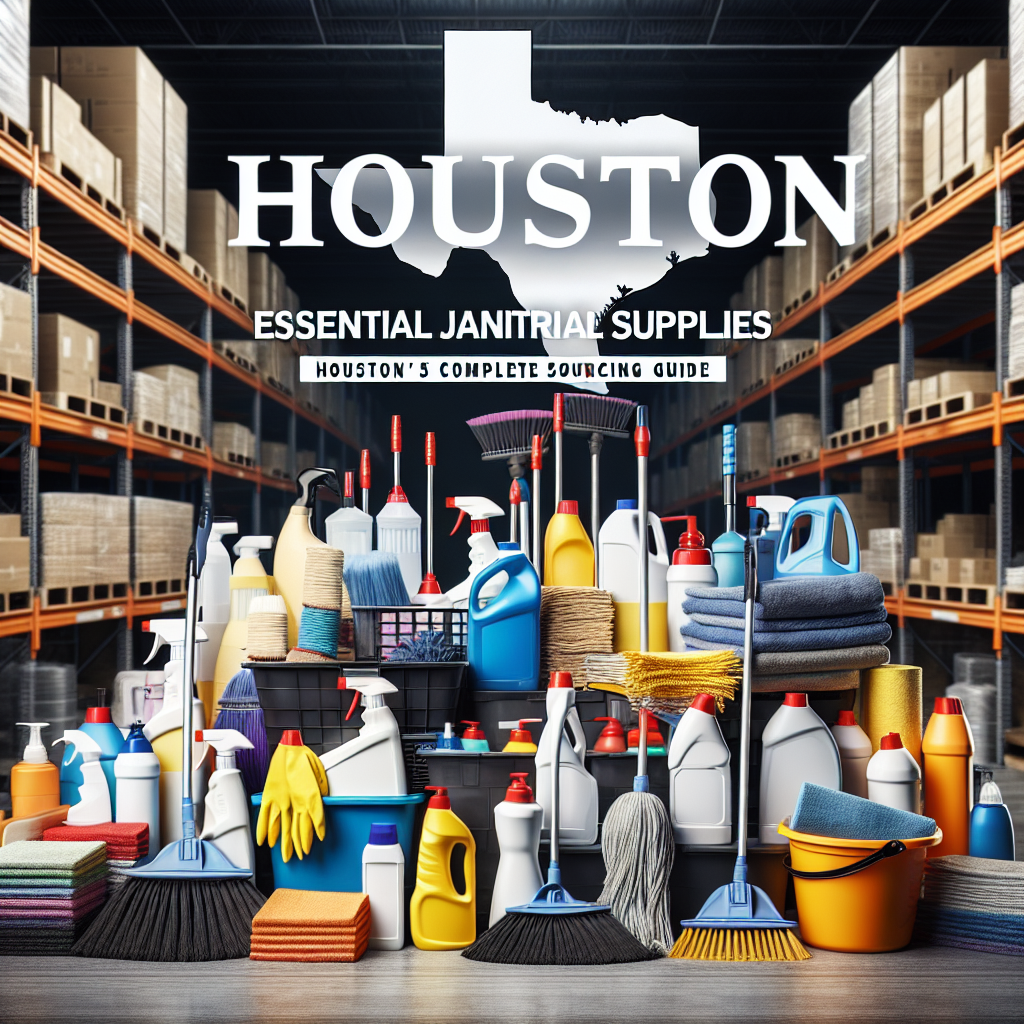Introduction
Supply chain resilience refers to the ability of a supply chain to anticipate, prepare for, respond to, and recover from disruptions. In today’s dynamic business environment, this resilience is crucial for ensuring business continuity and sustaining operations.
Key challenges companies face in maintaining resilient supply chains include:
- Globalization leading to complex networks
- Increased demand volatility
- Disruptions from natural disasters or geopolitical tensions
Strategies to enhance supply chain resilience will be explored in this article, including:
- Mapping the supply chain for vulnerabilities
- Diversifying suppliers and sourcing locations
- Leveraging technology for real-time monitoring
Understanding these strategies can empower organizations to build robust supply chains capable of withstanding unexpected challenges. For instance, mapping the supply chain for vulnerabilities can help identify potential weak points. Additionally, diversifying suppliers and sourcing locations can mitigate risks associated with over-reliance on a single source.
Moreover, leveraging technology for real-time monitoring not only enhances visibility but also allows for quicker response times during disruptions. Lastly, it’s important to remember that maintaining employee morale during challenging times is vital. Simple measures such as providing adequate break room supplies can significantly contribute to this aspect.
1. Understanding Supply Chain Resilience
A resilient supply chain is one that can withstand and recover from disruptions while still keeping operations running smoothly. Here are the key qualities that make a supply chain resilient:
- Flexibility: The ability to adapt to changes in demand, supply, and market conditions.
- Diversity: Having a mix of different suppliers and logistics options to reduce risks. This understanding diversity, equity, and inclusion in the workplace can also improve relationships with suppliers.
- Visibility: Access to real-time data throughout the supply chain.
There are several factors that can make supply chains vulnerable:
- Single Sourcing: Relying on only one supplier can create significant risks. By establishing multiple suppliers, you can reduce dependency and mitigate these risks, which is also an important aspect of entry-level procurement jobs.
- Geopolitical Risks: Political instability or trade restrictions can disrupt operations. To address this, it’s important to develop backup plans and diversify your sourcing locations.
- Natural Disasters: Events such as hurricanes or earthquakes can halt production. It’s crucial to invest in improving infrastructure and have a plan in place for recovering from disasters.
Adaptability is crucial when it comes to bouncing back from disruptions. Organizations that prioritize flexibility are able to respond quickly to unexpected challenges. This may involve reassessing relationships with suppliers, adjusting inventory strategies, and using technology to make better decisions.
Creating a culture of adaptability empowers teams to navigate uncertainties effectively, ensuring long-term resilience within the supply chain framework. For example, breaking boundaries with top trends in supplier innovation can significantly enhance resilience.
Additionally, understanding certain procurement terms can help improve communication about the value of procurement. This knowledge is especially useful when dealing with the complexities of purchasing groups versus group purchasing organizations.
2. Mapping the Supply Chain for Resilience
Effective supply chain mapping is essential for identifying vulnerabilities and bottlenecks. Achieving visibility across all stages of the supply chain allows companies to pinpoint areas susceptible to disruptions, enabling proactive measures.
Key Benefits of Supply Chain Mapping:
- Increased Visibility: Understanding your supply chain’s flow and interdependencies leads to better decision-making.
- Identifying Bottlenecks: Pinpointing slowdowns in processes helps streamline operations.
- Enhanced Risk Management: Recognizing potential vulnerabilities strengthens overall resilience.
Techniques for Comprehensive Supply Chain Mapping:
- Flowcharting: Visual representation of processes can highlight inefficiencies.
- Data Analysis: Using analytics tools to assess performance metrics and trends improves understanding of supply chain dynamics.
- Stakeholder Interviews: Engaging with suppliers, partners, and internal teams provides insights into operational challenges.
Case Study Example:
A major automotive manufacturer implemented a comprehensive mapping strategy that revealed significant delays in parts delivery. By addressing these bottlenecks through improved logistics partnerships, they reduced lead times by 30%.
Harnessing effective supply chain mapping not only mitigates risks but also enhances your organization’s capacity to respond quickly to unexpected challenges, laying a strong foundation for future resilience strategies. This could also involve aspects such as procurement optimization, which further streamlines the supply chain process. For more personalized assistance in enhancing your supply chain resilience, feel free to contact us.
3. Diversifying Suppliers and Sourcing Locations
Building strong relationships with multiple suppliers is essential for reducing dependency risks. This approach not only mitigates the impact of potential disruptions but also fosters competitive pricing and improved service levels. Establishing redundancy in your supply chain enhances disaster recovery capabilities, ensuring that operations continue smoothly even when one supplier faces challenges.
Key strategies include:
- Supplier Diversity: Engaging a range of suppliers across different sectors can protect against fluctuations in availability and pricing.
- Geographic Diversification: Sourcing from various locations can shield your business from regional disruptions caused by natural disasters, political instability, or economic downturns.
- Evaluating Supplier Performance: Regularly assessing supplier reliability helps in identifying alternative sources quickly when needed.
- Effective Sourcing Strategies: Implementing effective sourcing strategies not just for suppliers but also for hiring top talent can significantly enhance operational efficiency.
Consider the example of a manufacturing company that expanded its supplier network to include vendors from different regions. When a sudden disruption impacted one area, the company successfully pivoted to alternate suppliers, minimizing downtime and maintaining production schedules.
Investing in diverse supplier relationships not only strengthens supply chain resilience strategies but also enhances overall operational agility. By prioritizing these practices, companies position themselves to navigate uncertainties more effectively.
4. Creating Alternative Logistics Routes for Business Continuity
Creating alternative logistics routes is critical for ensuring the uninterrupted flow of goods during disruptions. Companies must prioritize logistics planning that includes backup options to mitigate risks associated with supply chain interruptions. Developing partnerships with emergency logistics support providers enhances readiness for unforeseen events.
Key considerations include:
- Identifying Vulnerabilities: Assess existing logistics networks to pinpoint potential weaknesses that could disrupt goods flow.
- Establishing Redundant Routes: Develop multiple transportation routes and methods—such as rail, air, and road—to ensure flexibility in goods movement.
- Collaborating with Emergency Partners: Engage third-party logistics providers who specialize in rapid response scenarios, ensuring they are integrated into your contingency plans.
Examples of Success
- A leading automotive manufacturer implemented a dual-sourcing strategy for shipping, allowing them to switch between freight carriers seamlessly. During a recent natural disaster, this approach enabled them to maintain production schedules without significant delays.
- A global electronics company developed a partnership with local courier services in key markets, allowing them quick access to alternate delivery methods when major shipping lanes were compromised.
Investing in these strategies not only safeguards against disruptions but also strengthens overall supply chain resilience. It’s essential to remember that these strategies can be successfully implemented even when resources are limited. By embracing constraints and optimizing processes, companies can thrive under such circumstances, as discussed in this article about succeeding with limited resources.
Moreover, the importance of transparent communication with suppliers cannot be overstated. Building trust through open dialogue not only drives business growth but also ensures smoother operations during challenging times. This aspect of supplier relationship management is elaborated upon in our article about the importance of transparent supplier communication.
5. Using Technology for Real-Time Monitoring and Tracking
Real-time monitoring is crucial for maintaining supply chain resilience. With advancements in technology, organizations can now utilize various solutions to ensure timely visibility of their operations.
Key Technologies Enabling Real-Time Tracking:
- Internet of Things (IoT): IoT devices collect and transmit data across the supply chain, allowing for accurate tracking of inventory and shipments.
- Artificial Intelligence (AI): AI algorithms analyze data patterns, predicting potential disruptions and enabling proactive management.
Benefits of Early Issue Identification:
- Minimized Risks: Early detection of anomalies helps mitigate risks before they escalate into significant issues.
- Enhanced Decision-Making: Access to real-time data allows managers to make informed decisions quickly, improving operational efficiency.
Case Studies Highlighting Effectiveness:
- Amazon: Utilizes AI-driven algorithms to monitor supply chain metrics in real-time, ensuring rapid response to any disruptions.
- Walmart: Employs IoT sensors to track inventory levels and shipments, significantly reducing stockouts and improving customer satisfaction.
Integrating these technology solutions fosters a more resilient supply chain capable of swiftly adapting to unexpected challenges.
6. Centralizing Information with ERP Systems
Centralized information management is crucial for enhancing supply chain resilience. ERP (Enterprise Resource Planning) systems play a pivotal role in this process by:
- Enhancing Visibility: ERP systems consolidate data across various functions, providing a single source of truth for all stakeholders.
- Facilitating Data Sharing: Improved communication among partners leads to better collaboration and faster decision-making.
The implementation of ERP systems brings several benefits, including:
- Streamlined Operations: Automated processes reduce errors and increase efficiency.
- Real-Time Insights: Access to up-to-date information allows for quick responses to disruptions.
- Improved Forecasting: Enhanced data analytics capabilities help in predicting demand fluctuations.
Challenges can arise during implementation, such as:
- Cost of Deployment: Initial investment can be significant, especially for small businesses.
- Change Management: Employees may resist transitioning to new systems, necessitating comprehensive training and support.
The successful integration of ERP systems ultimately contributes to stronger supply chain resilience strategies, enabling organizations to adapt swiftly to changes and uncertainties in the market. Investing in these systems is a critical step toward achieving operational excellence.
7. Good Inventory Management Practices for Resilience Building
In an unpredictable business landscape, effective inventory management is crucial for resilience. The shift from Just-In-Time (JIT) to Just-In-Case (JIC) inventory models can significantly enhance a company’s ability to withstand disruptions.
Benefits of JIC Inventory Model
- Buffer Stock: Maintaining extra inventory serves as a buffer against unexpected demand spikes or supply chain interruptions.
- Flexibility: Companies can respond more swiftly to customer needs, reducing lead times and improving service levels.
Challenges of Transitioning
- Cost Implications: Holding additional inventory increases storage costs and may tie up capital that could be used elsewhere.
- Waste Risks: Perishable goods or trends-driven products may lead to excess stock that becomes obsolete.
Real-World Examples
- A manufacturing firm transitioned to the JIC model during the COVID-19 pandemic, ensuring they had essential components readily available. This decision enabled them to maintain production levels while competitors struggled with delays.
- A retail company adopted JIC practices by stockpiling seasonal items ahead of peak demand periods, resulting in a 30% increase in sales revenue during holiday seasons.
By embracing these effective inventory management practices, businesses can fortify their supply chains against future uncertainties.
8. Emphasizing Supplier Diversity as a Risk Mitigation Strategy
Supplier diversity offers significant advantages in reducing risks within the supply chain ecosystem. A multi-threaded procurement approach, such as tail spend management, can be crucial for enhancing resilience against disruptions. Benefits include:
- Reduced Dependency: Engaging with multiple suppliers minimizes reliance on a single source, which helps avoid potential bottlenecks.
- Innovation and Flexibility: Diverse suppliers often bring innovative solutions and flexibility that can adapt to changing market conditions.
- Enhanced Reputation: Companies committed to supplier diversity may enjoy improved brand perception among consumers and stakeholders.
To foster diverse supplier relationships, consider implementing these strategies:
- Supplier Development Programs: Invest in training and resources to help minority-owned businesses grow and meet your procurement needs. This aligns with the philosophy of continuous learning and strategic thinking driving procurement success.
- Partnerships with Diverse Organizations: Collaborate with groups that promote diverse suppliers to expand your network.
- Inclusive Procurement Policies: Create guidelines that prioritize diverse vendors in bid processes, which is vital for effective supplier relationship management.
Success stories abound where companies have experienced increased resilience through diverse sourcing. For instance, organizations with robust supplier diversity programs have reported positive outcomes. A major automotive manufacturer successfully integrated various minority-owned suppliers into their supply chain, resulting in enhanced operational flexibility during supply disruptions. This commitment not only strengthened their supply chain but also contributed positively to community development.
Moreover, organizations with a single-person procurement function can still leverage these strategies effectively by adopting some optimized solutions for cost efficiency and supplier management.
9. Nearshoring as a Practical Resilience Strategy
Nearshoring provides significant advantages by sourcing goods closer to home markets. This strategy enhances operational flexibility and streamlines logistics, which is crucial for maintaining supply chain resilience. Key nearshoring benefits include:
- Cost Reduction: Proximity to suppliers can minimize shipping costs and tariffs, allowing for better budget management. This aligns with the concept of leveraging drastic cost reduction through collective spend, a strategy that can be effectively employed in nearshoring.
- Lead Time Improvements: Shorter distances result in quicker delivery times, enabling companies to respond rapidly to market demands.
Industry Examples of Successful Nearshoring Initiatives
Industry examples illustrate successful nearshoring initiatives, such as those outlined in this article on successful nearshoring examples across various industries:
- A major electronics manufacturer shifted production from Asia to Mexico, reducing lead times by 50% and achieving a 20% reduction in logistics costs.
- A fashion retailer moved its fabric sourcing from overseas to Central America, which not only cut shipping times but also allowed for more responsive inventory management.
Implementing nearshoring as part of your supply chain resilience strategies can lead to enhanced agility and responsiveness, ensuring that businesses are better equipped to navigate disruptions while maintaining competitiveness in the market. The potential for maximizing cost savings through such strategies further underscores their importance in today’s dynamic business environment.
10. Performance Measurement Metrics for Assessing Supply Chain Resilience
Measuring supply chain resilience requires the use of specific Key Performance Indicators (KPIs). These metrics help in evaluating how well your supply chain can withstand disruptions and recover from crises.
Essential KPIs for Resilience
- Recovery Time: Measures the time taken to restore operations after a disruption.
- Reliability Rate: Assesses the consistency of supply chain performance, focusing on delivery timelines and quality. This is where maximizing supplier performance comes into play, as reliable suppliers are crucial for maintaining quality and meeting deadlines.
- Supply Chain Flexibility: Evaluates the ability to adapt to changes in demand or supply conditions.
- Inventory Turnover Ratio: Indicates efficiency in inventory management, reflecting how quickly stock is sold and replaced.
Tools and Methods for Effective Performance Measurement
Utilizing various tools enhances performance assessment:
- Data Analytics Platforms: Analyze historical data to identify trends and potential vulnerabilities.
- Real-Time Monitoring Systems: Leverage IoT and AI technologies for immediate insights into supply chain status.
- Benchmarking: Compare performance against industry standards to gauge improvement areas.
These KPIs and tools enable businesses to identify weaknesses, assess recovery capabilities, and enhance overall supply chain resilience. Adopting these metrics can lead to more informed decision-making and strategic planning. It’s also essential to consider procurement strategies during crises as they play a vital role in building resilience for tough times.
Conclusion: Strategic Planning for a Resilient Future
The world of supply chain management is changing quickly, and companies need to keep up to succeed in uncertain times.
Take action today by implementing the supply chain resilience strategies discussed in this article. Begin with an assessment of your current practices, identify areas for improvement, and prioritize initiatives that strengthen your supply chain against disruptions.
Building a resilient supply chain is not just a tactical move; it is a strategic planning endeavor essential for long-term success. As you navigate this journey, keep an eye on the future job market trends, especially if you’re considering roles like a procurement engineer. Understanding the salary trends and insights for procurement engineers in 2025 can provide valuable perspective when planning your career trajectory.
Lastly, don’t forget to leverage available resources and networks that offer exclusive membership benefits. These can provide additional support and opportunities as you implement these strategies.
Embrace Best Practices
Start implementing best practices in supply chain management to enhance resilience. This includes:
- Optimizing inventory management
- Diversifying suppliers
- Establishing strong relationships with key stakeholders
Stay Ahead of Future Trends
Stay ahead of future trends such as:
- Increased reliance on technology for monitoring
- Focus on sustainability and ethical sourcing
- Greater emphasis on supplier diversity
By proactively addressing these trends, you can position your organization for success in the evolving landscape of supply chain management.
FAQs (Frequently Asked Questions)
What is supply chain resilience and why is it important?
Supply chain resilience refers to the ability of a supply chain to prepare for, respond to, and recover from disruptions. In today’s business environment, characterized by volatility and uncertainty, having resilient supply chains is crucial for maintaining operational continuity and ensuring customer satisfaction.
What are some key challenges companies face in maintaining resilient supply chains?
Companies often encounter challenges such as identifying vulnerabilities in their supply chains, managing supplier relationships effectively, adapting to unexpected disruptions, and ensuring visibility across all supply chain components. These challenges can hinder a company’s ability to respond swiftly and effectively during crises.
How can companies diversify their suppliers and sourcing locations?
Companies can reduce dependency risks by building relationships with multiple suppliers and sourcing from diverse geographic locations. This strategy not only enhances resilience but also provides alternatives in case one supplier faces disruptions due to natural disasters or geopolitical issues.
What role does technology play in enhancing supply chain resilience?
Technology plays a pivotal role in enabling real-time monitoring and tracking of goods throughout the supply chain. Solutions like IoT and AI facilitate early identification of potential issues, allowing companies to address them proactively before they escalate into significant disruptions.
Why is good inventory management essential for building supply chain resilience?
Effective inventory management practices, such as transitioning from Just-In-Time (JIT) to Just-In-Case (JIC) models, enhance resilience by ensuring that companies have adequate stock on hand during disruptions. This approach helps mitigate risks associated with sudden demand spikes or supply shortages.
What are the benefits of emphasizing supplier diversity as a risk mitigation strategy?
Emphasizing supplier diversity helps reduce risks within the supply chain ecosystem by fostering relationships with a variety of suppliers. This multi-threaded procurement approach not only enhances resilience but also promotes innovation and competitive advantage through diverse perspectives and capabilities.





